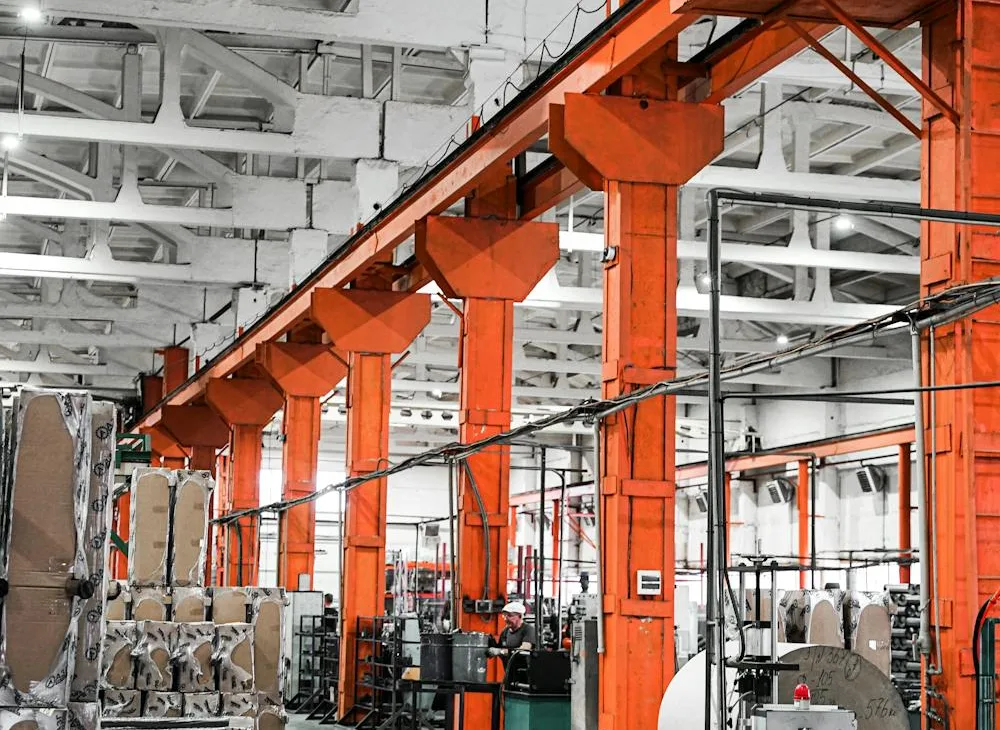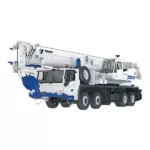What is a Heat Exchanger?
Heat exchangers in Malaysia play a vital role in diverse industries and are inventive devices that act as intermediaries in the usage of heat, seamlessly transferring thermal energy from one fluid to another without mixing them. Think of them as facilitators of a handshake, where heat passes its energy through a barrier–the exchanger’s wall–instead of engaging in direct contact.
This barrier, typically made from highly conductive materials like metal, serves as the conduit for efficient heat flow while maintaining a strict boundary between fluids. These tools help in keeping your home cozy, safeguarding your car’s engine, and even powering plants and refining chemicals.
They boast diverse designs tailored to specific needs. One of the illustrated examples that can be shown is the classic shell and tube model, where hot and cold fluids course through separate compartments, or the sleek plate heat exchanger, adorned with thin, corrugated plates meticulously arranged to maximize heat transfer efficiency.
Where Can You Find Heat Exchangers?
Heat exchangers enhance the efficiency of heat transfer, and are far more ubiquitous than one can imagine. Often associated solely with industry settings, these ingenious devices operate quietly behind the scenes, enriching the daily facets of our daily lives, providing comfort, power, and sustainability in our modern world. Heat exchangers can be found in many appliances.
Refrigerators
The refrigerator goes through three main processes when food and drinks are placed inside. They are heat absorption, refrigerant circulation, and heat release. Since the items usually have a higher temperature, the evaporator coil, containing a refrigerant fluid will absorb the heat energy from the interior of the refrigerator. This results in evaporation of heat, transforming into a low-pressure gas.
Air conditioners
The evaporator coil in the air conditioner cools down warm air that enters your home. The refrigerant with its abundance of heat energy, flows to the outdoor unit where the condenser coil resides. Here, the refrigerant undergoes a condensation phase where gas turns into liquid, cooling the overall environment.
Furnaces and Boilers
These appliances transfer heat from a hot source with heat exchangers as a medium to heat your home. For example, a burning fuel, to the water or air it is most commonly used.
Pool Heaters
On the other hand, pool heaters use natural gas or propane as a hot source to transfer heat to the pool water.
Car Radiators
The radiator acts as a heat exchanger, transferring heat from the engine coolant to the air flowing throughout the car.
Power Plants
Heat exchangers are used in steam power plants to transfer heat from a hot source. These usually come in the form of a nuclear reactor or fossil fuel-fired boiler to water to create steam. The steam drives the movement of the turbine, generating electricity.
Chemical Plants
Heat exchangers are crucial in chemical plants for most chemical processes. They are used to heat up or cool down chemicals for various separations or reactions.
Oil and Gas Refineries
Heat exchangers are used in oil and gas industries to heat up crude oil so that it can be separated into its specific components such as diesel, jet fuel, and gasoline.
Types of Heat Exchangers
Plate and Shell
Plate and shell heat exchangers offer noteworthy advantages such as high efficiency due to their extensive plate surface area, optimizing heat transfer. Their tough shell enables demanding applications like steam heating and high-pressure fluids, catering to diverse industrial needs. In terms of compactness, they are better than traditional shell and tube exchangers, being lighter and smaller, resulting in space preservation. They also have low maintenance requirements, due to the absence of gaskets or brazing connections. However, plate heat exchangers may have limitations in customization and larger flow capacities. Despite their drawbacks, they are efficient and versatile, making them a popular choice in various industrial settings
Air-Cooled
This type of exchangers play a huge role in scenarios where water is impractical or scarce to use. These systems are propelled by fans, fins, or extended surfaces to facilitate heat transfer from a fluid to air. Moreover, they can be found in various applications such as car radiators and air conditioners. For example, car radiators would utilize these systems to cool engine coolant by channeling air through the front grille. On the other hand, air conditioners release heat extracted from indoor air to the outside environment. They are also efficient in electronics cooling where they dissipate heat generated by electronic components. However, air-cooled systems may not be as efficient compared to water-cooled counterparts due to the lower heat capacity of air.
Double-Tubed
Double-tube heat exchangers have a shell and tube design with two concentric tubes. Fluid flows inside the inner tube of one tube while the other courses through the annular space between them. This aerodynamic configuration offers compactness and simplicity, perfect for applications with the presence of low-pressure fluids or space constraints. It is durable and capable of withstanding high temperatures due to its double-walled construction. However, one of the drawbacks of this design is its reduced efficiency because of a smaller surface area.
Plate-Fin
This type of heat exchanger utilizes thin metal plates. The difference lies on their fins to amplify surface area and augment heat transfer. It excels in efficient heat dissipation in high-temperature environments, prominent in application in aircraft engines and power plants. It also proves valuable in cryogenic applications, capable of facilitating processes involving extremely low temperatures. When compared to standard plate heat exchangers, the complexity of this design in manufacturing and higher cost present drawbacks.
Key Differences Between AODD Pumps and Heat Exchangers
Air operated double diaphragm pumps and heat exchangers are separate equipment types with their own purpose. However, they can be used together in complex systems.
Air Operated Double Diaphragm Pumps
Purpose
AODD pumps are used in various industries for transferring abrasive fluids and slurries from one place to another efficiently
Mechanism
Compressed air pressure is used to operate these pumps. It creates suction and discharge cycles that move the fluid through the pump. Alternately, the compressed air flexes and relaxes the diaphragms.
Compatibility with Fluid
AODD pumps are recognized for their ability to handle different types of fluids. They include corrosive chemicals, solids in suspension, and viscous liquids. With the ability to handle fluids with solid contents and varying viscosities, they are suitable for a wide range of applications.
Temperature Control
AODD pumps are not directly involved in temperature control, unlike heat exchangers. Their main function is to transfer fluid and does not play a role in regulating fluid temperature.
Applications
AODD pumps can be found in various fluid transfer processes across industries such as mining, food and beverage, pharmaceuticals, chemical processing, mining, and wastewater treatment. They are sought after for their versatility, reliability, and ability to handle challenging fluid conditions.
Plate and Shell Heat Exchanger
Purpose
This tool is specifically designed to transfer heat between two fluids without allowing them to mix. Moreover, they can be found commonly in industrial processes where efficient heat transfer and precise temperature control are critical.
Mechanism
To transfer heat between fluids, the heat exchanger utilizes thin metal plates arranged in a compact shell. The plates have a large surface area for heat transfer, facilitating efficient thermal transfer between the two fluids.
Compatibility with Fluid
The heat exchangers work best with fluids of similar viscosity, unlike AODD pumps. They are efficient when handling liquids with thermal properties and comparable flow rates.
Temperature Control
They have the ability to indirectly control fluid temperature by facilitating heat exchange between two fluids. Even without direct involvement in temperature regulation, they are able to maintain precise temperature levels in industrial processes.
Applications
These appliances are used in numerous industries such as chemical processing, food processing, HVAC systems, power generation, and petroleum refining. They are prized for their compact design, high thermal efficiency, and ability to withstand high pressures and temperatures.
In short, plate and shell heat exchangers specialize in temperature control and heat transfer processes while AODD pumps excel in fluid transfer applications.







